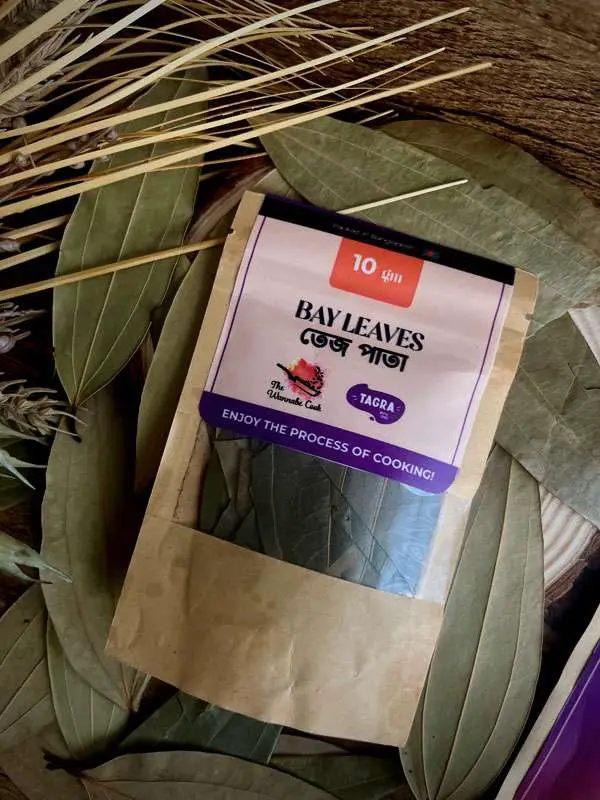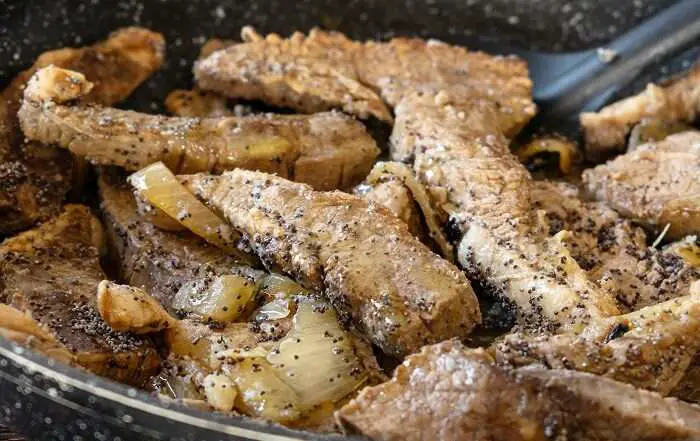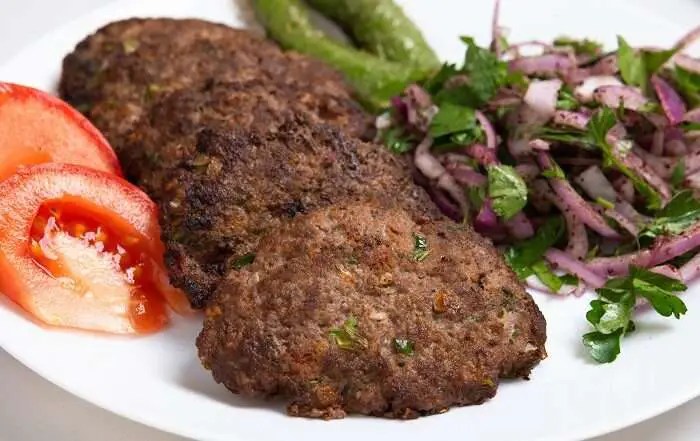The bay leaf is a powerfully aromatic leaf used primarily for culinary purposes. Although there are multiple varieties of bay leaves cultivated around the world today, the original bay leaf came from the bay laurel tree (Laurus nobilis) native to the Asian region of the Mediterranean. This form of bay leaf, which is also known as sweet bay and Grecian laurel, is still the herb typically used for infusing soups and sauces with an aromatic flavor.
Bay leaves can be used in dried, crushed, and fresh form, but are most commonly sold as dried whole leaves in the spice aisle of any grocery store. Some of the key points about the origin and historical significance of bay leaves are:
Ancient Mediterranean: Bay laurel trees have been cultivated since ancient times in the Mediterranean region, particularly in Greece. The leaves were highly valued not only for their culinary uses but also for their symbolic and medicinal purposes.
Symbolism and Mythology: In ancient Greece and Rome, bay leaves were associated with wisdom, protection, and victory. They were used to crown victorious athletes and scholars, symbolizing honor and achievement. The term “baccalaureate” derives from the Latin words for laurel berry (“baccalaureus”), indicating academic achievement.
Culinary Use: Bay leaves are widely used in Mediterranean cuisine to add flavor to soups, stews, sauces, and braises. They have a strong, aromatic flavor and are typically used whole, then removed before serving due to their tough texture.
Medicinal and Aromatic Qualities: Bay leaves were also used in traditional medicine for their aromatic and potential medicinal properties, although modern uses are more limited.
Cultivation and Spread: The cultivation of bay laurel trees spread from the Mediterranean to other parts of Europe and eventually to other continents through trade and exploration. Today, bay leaves are used in various cuisines around the world.
Types of Bay Leaves
Tej Patta or Indian Bay Leaf: It belongs to the Lauraceae family. It’s a popular spice in Indian cuisine and a sought-after ingredient in ‘masala chai’. Traditionally used for making Ayurvedic medicines. The Indian Bay Leaf tree grows in abundance in Northeast India, and in Nepal, Bhutan and Burma.
Bay Laurel from Turkey: Bay laurel, also known as sweet bay, is also from Lauraceae family. It grows in the Mediterranean, France, Belgium, Central and North America, Turkey, Italy, Russia, Israel and India (Assam and other NE states).
California Bay Leaf: California bay leaf or California laurel is like the Bay laurel but has a stronger flavor. It is also from the Lauraceae family and is native to Northwestern U.S. Coast Range. It is known by different names. Oregon people called the tree ‘Oregon myrtle’. Other names associated with this are pepperwood, spicebush, cinnamon bush, peppernut tree, headache tree, mountain laurel, and balm of heaven.
Indonesia Bay Leaf: Commonly known as Salam leaf or Balinese bay leaf, it belonged to the Myrtaceae family. It’s a native of Sumatra, Java, and Bali. It has a faint smell compared to other bay leaf varieties. But its flavor is released when it undergoes a specific heat treatment.
West Indian Bay Leaf: Indigenous to the Caribbean region, it belongs to Myrtaceae family. It is also known as bay rum tree, and ciliment. It has a strong aromatic flavor and it’s an important spice in Caribbean cuisine.
Mexican Bay Leaf: This belongs to the Lauraceae family and is native to Mexico. It is used as a seasoning for Mexican dishes. It is also commonly used for various medicinal and religious purposes.
Fun Facts
Nutritional Facts
Bay leaves are an excellent source of vitamin A and vitamin C. The leaves are also high in folic acid, niacin, pyridoxine, pantothenic acid, and riboflavin. Trace amounts of minerals, including copper, potassium, calcium, manganese, iron, selenium, zinc, and magnesium, can also be found in the leaves. The leaves are high in the essential oils cineol and eugenol, giving the leaves their eucalyptus and menthol aroma. The high levels of these oils within the leaves have led to their use to soothe stomach ulcers, relieve gas and colic, and soothe the throat and cough. Historically the leaves were also used as a bug repellent and to treat insect bites.
Medical Uses:
Diabetes: According to a 2008 study, taking capsules that contain 1–3 grams of bay leaf daily can help lower and manage glucose levels and cholesterol levels in people with diabetes. This is most likely because bay leaves contain polyphenols, which are powerful antioxidants. This promising information indicates that bay leaf could help regulate and even prevent diabetes and other cardiovascular diseases.
Kidney Stones: A 2014 study investigated whether bay leaf extract could help prevent kidney stones. The study found that, along with eight other traditional medicinal herbs, bay leaf reduced the amount of urease in the body. Urease is an enzyme that, when out of balance, can lead to several gastric disorders, including kidney stones.
Folklore and Superstition: In some cultures, bay leaves were believed to ward off evil spirits and bring good luck. Placing a bay leaf under your pillow was thought to induce prophetic dreams.
Treating Wounds: Bay leaf has been studied for its ability to reduce inflammation in the wound area. In older experiments conducted on rats, scientists found that bay leaf had the ability to assist with wound healing.
Insect Repellent: Bay leaves are known for their insect-repellent properties. They can be placed in pantries or storage containers to deter insects such as ants, moths, and cockroaches.
The Difference Between Fresh Bay Leaves and Dried Bay Leaves
The main differences between fresh bay leaves and dried bay leaves lie in their flavor, aroma, and how they are used in cooking:
The Use of Bay Leaf in Cooking
Bay leaves are commonly used in cooking to impart a subtle, earthy flavor to dishes. Here’s how they are typically used:
Level 1: Using Bay Leaf as a Natural Antioxidant
Bay leaves are primarily used in cooking to impart flavor to dishes and are not typically used for treating colds or other illnesses. However, in some traditional practices and folk medicine, bay leaves have been used in herbal remedies for various purposes, including respiratory issues. Here are a few ways bay leaves have been used outside of cooking:
Steam Inhalation: Bay leaves have been used in steam inhalation treatments to help alleviate respiratory symptoms such as congestion or cough. To do this, a few bay leaves are added to a bowl of hot water, and the steam is inhaled (with caution to avoid burns).
Herbal Teas: Some cultures use bay leaf tea as a traditional remedy for colds or flu-like symptoms. The dried leaves are steeped in hot water to make a tea that is believed to have soothing properties.
Topical Use: In some cases, bay leaf essential oil (extracted from the leaves) is diluted and used in massage oils or topical applications for muscle aches or as a chest rub for congestion.
Aromatherapy: The aroma of bay leaves is sometimes used in aromatherapy practices to promote relaxation and reduce stress, which indirectly may support overall well-being during illness.
Level 2: Using Bay Leaf in Different dishes
Beef Stew with Bay Leaf
Heat olive oil in a large pot or Dutch oven over medium-high heat. Add cubed beef and brown on all sides. Remove beef from the pot and set aside. In the same pot, add chopped onion, carrots, celery, and minced garlic. Sauté for 5-7 minutes until vegetables are softened. Stir in bay leaves, dried thyme, and dried rosemary. Cook for 1 minute until fragrant. Pour in beef broth and red wine (if using), scraping the bottom of the pot to deglaze and loosen any browned bits. Return browned beef to the pot. Season with salt and pepper to taste. Stir in tomato paste and diced potatoes. Bring to a boil, then reduce heat to low, cover, and simmer for 1.5 to 2 hours, or until beef is tender and flavors have melded. Remove bay leaves before serving. Garnish with chopped fresh parsley.
Classic Chicken Noodle Soup with Bay Leaf
Heat olive oil in a large pot over medium heat. Add chopped onion, carrots, celery, and minced garlic. Sauté for 5-7 minutes until vegetables are softened. Stir in bay leaves and dried thyme. Cook for 1 minute until fragrant. Pour in chicken broth and bring to a boil. Add cooked shredded chicken and egg noodles to the pot. Cook for 8-10 minutes, or until noodles are tender. Season with salt and pepper to taste. Remove bay leaves before serving. Garnish with chopped fresh parsley!
Bay Leaf Rice Pilaf
Rinse rice under cold water until water runs clear. Drain well. In a medium saucepan, melt butter or heat olive oil over medium heat. Add bay leaves and sauté for 1 minute until fragrant. Add rinsed rice to the saucepan. Cook, stirring frequently, for 2-3 minutes to toast the rice. Pour in chicken or vegetable broth. Bring to a boil.
Reduce heat to low, cover, and simmer for 15-20 minutes, or until rice is tender and liquid is absorbed. Remove bay leaves before serving. Fluff rice with a fork and season with salt and pepper to taste. Garnish with chopped fresh parsley before serving!





